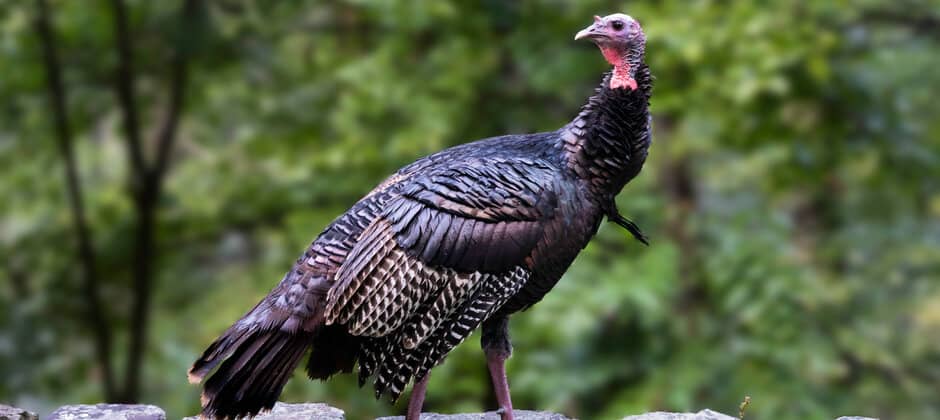Share this article
The Wildlife Society supports National Wild Turkey Symposium
The Wildlife Society is not only sponsoring the upcoming 12th National Wild Turkey Symposium, but is also preparing a special issue of its journal the Wildlife Society Bulletin focusing on research presented there.
The North Carolina Wildlife Resources Commission and National Wild Turkey Federation are co-hosting the symposium on June 6-10 in Asheville, North Carolina. The symposium takes place every five years, and its proceedings are always peer-reviewed and published.
The Wildlife Society has been a long-time sponsor of the event, which was held even before the start of the National Wild Turkey Federation. “The longevity and support of The Wildlife Society goes back to the very first proceeding,” said Mark Hatfield, the national director of conservation services with the National Wild Turkey Federation. In 1959, the Southeastern Section of TWS sponsored the event held in Memphis, Tennessee.
Back then, wildlifers were concerned about seeing fewer turkeys (Meleagris gallopavo) on the landscape. In 1959, there were well under a million compared with 1.3 million turkeys when the National Wild Turkey Federation was founded in 1973.
The Wild Turkey Symposium helped managers and researchers alike come together to help with restoration efforts for the species. Every five years, TWS continued to have a role in the meetings, and wild turkey populations peaked in 2005, with nearly 7 million nationwide.
But at the last symposium, turkey enthusiasts noted a decline. Populations were then about 6 million. Between 2009 and 2014, 250,000-300,000 turkeys were lost. Spring and fall harvest numbers also fell.
“Unfortunately, the health of the wild turkey has declined,” Hatfield sad. “That is where we’re trying to focus our efforts now. We’re trying to figure out why we’re seeing this fluctuation or instability of turkey populations.” Hatfield said that instability can lead to a less continuous source of turkeys as a resource and may impact current hunter recruitment, retention and reactivation efforts, which are critical to ensure hunters remain on the landscape.
“We need to be aware we’re making the right decisions to maximize the opportunities,” he said. “We don’t want to inadvertently create barriers that offset hunter recruitment thus we need to aggressively invest in the wild turkey to ensure the population and health.”
That’s important, he said, because turkey hunters are the third largest demographic of all hunters in the country. That regression in turkey hunters means less dollars that are “paramount for state wildlife agencies to function to better manage game and non-game species,” he said.
Hatfield said this upcoming symposium will focus on the issues of turkey hunting and recruitment. Other topics will include turkey habitat selection and movement, harvest dynamics, disease ecology, nesting ecology, population dynamics and human dimensions of turkey hunting.
“This will provide a continuation and opportunity to build relationships with turkey biologists across the country,” he said. “What it also does is ensure that the research being conducted is in the hands of managers making the on-the-ground decisions on turkey management and harvest.”
The Wildlife Society will also publish research from the symposium in a special edition of the Wildlife Society Bulletin scheduled to go out next month.
“I hope what comes out of this at the end is we continue to invest, expand and rejuvenate interest in the priority of wild turkeys,” he said. “The same ingenuity needs to be there as when we were doing restoration.”
Header Image: Biologists and managers will discuss wild turkey population and harvest declines at an upcoming symposium. Credit: N. Lewis/NPS








